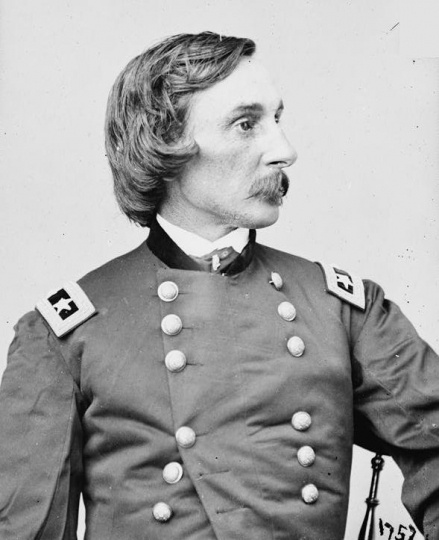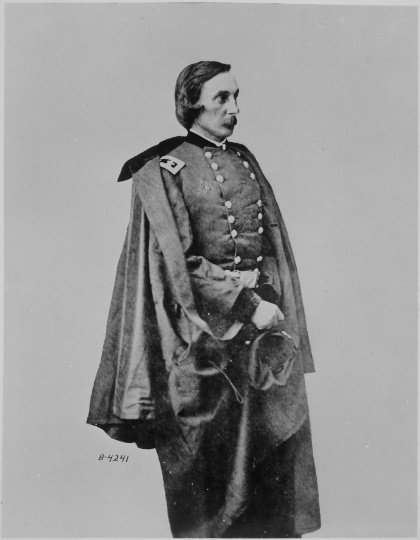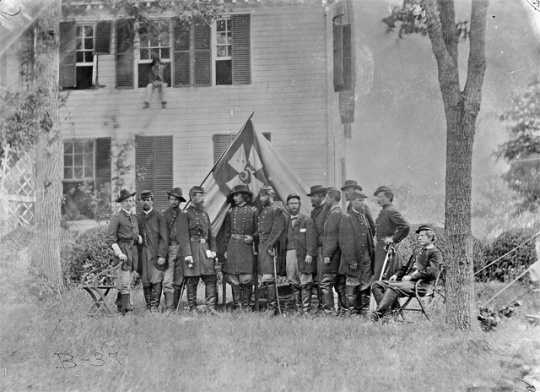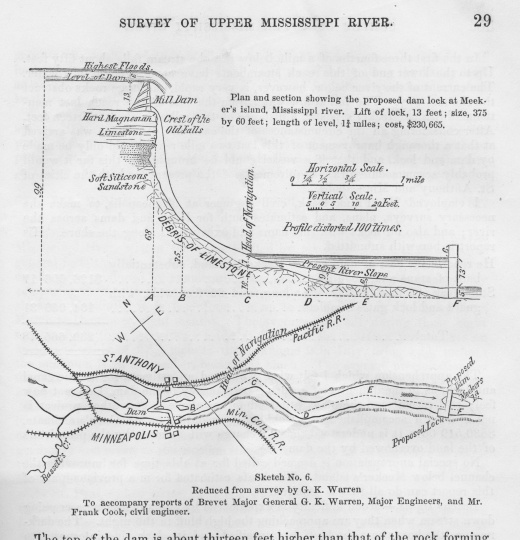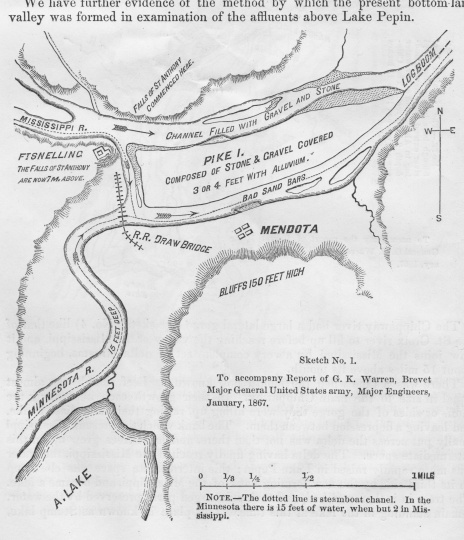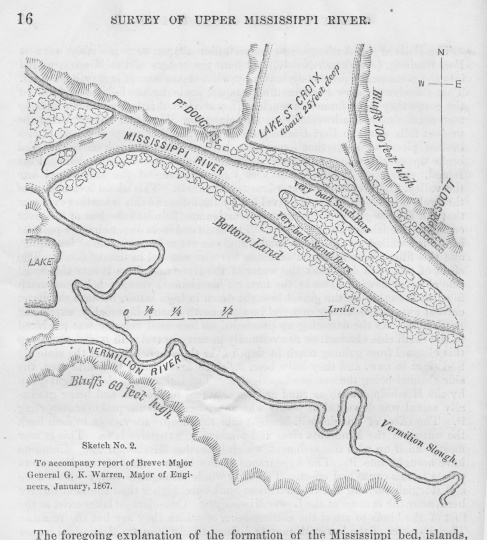Gouverneur Kemble Warren, topographer, Civil War veteran, and accomplished engineer, served his entire career with the U.S. Army. During his service, he mapped the tributaries of the Mississippi River and transcontinental railroad routes. As the first district engineer in St. Paul, he worked to preserve St. Anthony Falls and designed the nation’s first reservoir system. Glacial River Warren, which carved the Pleistocene channel now followed by the Minnesota River, is named for him.
Warren was born January 8, 1830, in Cold Spring, New York, and entered the U.S. Military Academy at West Point at the age of sixteen. He graduated second in the class of 1850 and was commissioned an officer of the Corps of Topographical Engineers. In his first assignment, he assisted Andrew A. Humphreys’ survey of the lower Mississippi River. He then helped survey potential railroad routes across the northern plains and evaluated rivers, including the Minnesota and Mississippi.
Warren became assistant professor of mathematics at West Point in August 1859. He left in April 1861 to organize and train the Fifth Regiment of New York Volunteers, known as Duryée’s Zouaves. Warren commanded the Zouaves at several early Civil War battles.
Warren became the chief engineer of the Army of the Potomac in 1863. On July 2, 1863, he surveyed terrain south of Gettysburg and recognized that a hill known as Little Round Top was the key to defending the Union Army line. After he observed Confederate regiments advancing towards the undefended hill, he redirected the nearby Third Brigade, Fifth Corps, to defend it. Warren himself led the 140th New York Regiment up the hill. They arrived at the summit less than sixty seconds before a Texas regiment.
Quick action by Union soldiers turned back the Confederate advance and saved the Union Army from a flank attack. It was Warren’s greatest military achievement. He was soon promoted to brevet major general and commander of II Corps, which included the First Minnesota Infantry Regiment.
Warren was reassigned commander of V Corps in March 1864. He continued to serve until relieved of command in early April 1865 after the Battle of Five Forks in Virginia.
Congressional legislation in July 1866 authorized the Corps of Engineers to maintain a four-foot-deep channel based on the record-low water level of 1864. Chief of Engineers Humphreys assigned Warren to open an office in St. Paul, Minnesota.
Warren arrived in St. Paul on August 17, 1866. He surveyed the Mississippi River and reported to Congress that dredging was more effective than the traditional and unreliable wing dams at scouring river channels. He worked with Senator Alexander Ramsey to determine how to open and maintain shipping channels on the upper Mississippi.
William D. Washburn of Minneapolis advocated a reservoir system to ensure navigation on the river during droughts. Warren surveyed the watershed to determine if “large reservoirs on the headwaters of the Mississippi [would] aid in keeping navigation at low stages.” His April 18, 1870, report recommended construction of up to forty-one reservoirs on the St. Croix, Chippewa, Wisconsin, and Mississippi Rivers.
Warren reported in 1868 that the Falls of St. Anthony were in imminent danger of total collapse due to excessive and unregulated efforts by local businessmen to harness the water power. The predicted break in the falls occurred on October 5, 1869, when water broke into a tunnel dug by William Eastman and John Merriman. This prompted the first large-scale construction project by the U.S. Army Corps of Engineers in Minnesota.
The congressional authorization and appropriation of $50,000 requested by the St. Paul district came in July 1870, two months after Warren had been transferred to Newport, Rhode Island. The corps completed a concrete wall in 1876 to shore up the limestone cap over which the river flowed. They completed a concrete apron in 1880.
Warren returned to Minnesota in the autumn of 1876 to inspect bridges across the Mississippi River between St. Louis and St. Paul. He died in Newport, Rhode Island, on August 8, 1882. A veterans’ organization erected a statue of him on Little Round Top on August 8, 1888.
The G. K. Warren Prize was initiated in 1969 and is awarded every four years by the National Academy of Sciences for distinguished accomplishment in geology and related sciences.








